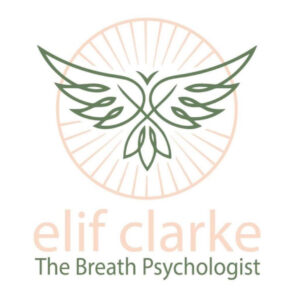Transformational Breath® is a self-help tool that enables us to achieve emotional, physical and mental balance. It is a connected breath with a long inhalation and short soft exhalation with no pause inbetween. It emphasises the importance of breathing throughout the whole respiratory system enabling physical and emotional wellbeing. Unfortunately however, most of us our unable to make use of our whole respiratory system when we breathe because of restricted breath pattern.
What causes this restriction?
We all know that the body retains emotions, especially unexpressed emotion. According to Transformational Breath® traumas, painful experiences, and stressful situations trigger strong emotions and in order to suppress their impact we stop breathing.
What happens to those emotions?
In actual fact, we don’t eradicate these emotions, but instead we repress them into our unconscious and also use various coping strategies to ensure we don’t experience their effect. Unfortunately when you resist these emotions they continue to persist but in other ways. They come to surface as defences or we may express them in other, unexpected, automatic ways.
For example, if we are unable to acknowledge our own anger, we may become frightened and scared or accepting of angry reactions when engaging with other people. This is also, in traditional talking therapy, known as Projective Identification – the individual addresses emotional conflict or internal/external stressors by falsely attributing to another his or her own unacceptable feelings, impulses, or thoughts.
In addition, preventing repressed emotions and trauma from resurfacing requires tremendous determination and energy. This creates chronic tension within our bodies, and requires us to continue to breathe in shallow restricted patterns.
Your breathing pattern presents literal and metaphorical information about how you see yourself, your core beliefs, assumptions, negative thoughts, and dysfunctional behaviour. According to Judith Kravitz, the founder of transformational breath® the art and science of understanding and revealing the direct relationship between your breathing and your view of yourself, others, and the world in general life experience is called Breath Analysis.
Transformational Breath® suggests that breathing throughout the whole respiratory system is essential for psychological and physical well-being, and that limiting beliefs resulting in self-sabotaging behaviours can be eliminated by changing our breathing patterns.
How do we achieve that?
As facilitators we observe where the breath goes first, where it pauses or gets blocked, and how much time is spent inhaling compared to exhaling. We also observe how much air we are absorbing and letting out. Each of these factors will reveal the physical and emotional state of the person.
What does it mean if we don’t breathe from the belly? The abdomen is the seat of the subconscious mind. If a person is not breathing from the abdomen this may suggest lack of confidence and self-esteem as they tend to retain self-judgment, guilt, and shame behaviours. As a result, they may suffer from depression.
If the breath starts in the middle, the person might have a perfectionist and overly responsible personality. The person may end up doing everything by himself/herself or totally avoiding doing anything, procrastinating. These people may suffer from an anxiety disorder known as Obsessive Compulsive Disorder (OCD). This condition has two main effects: obsessions and compulsions. Obsessions are unwelcome thoughts, images, urges or doubts that repeatedly appear in your mind; for example thinking that you have been contaminated by dirt and germs, or experiencing a sudden urge to hurt someone. These obsessions are often frightening or seem so horrible that you are unable to share them with others. The obsession interrupts your other thoughts and creates significant anxiety. Compulsions are repetitive activities that you feel compelled to do. This could be something like repeatedly checking a door to make sure it is locked or repeating a specific phrase in your head.
Next we look at the solar plexus and diaphragm area which are located in the middle of respiratory system. According to Transformational Breath® lack of breath in the midsection represents the person’s fear and worry about everything in their life, even when there is little or no reason to worry. These people may be anxious about just getting through the day. At times, worrying prevents people from completing everyday tasks. It can affect their sleep pattern at night as they may ruminate things might go wrong. In addition, the lack of sleep and worry will lead to tiredness and irritability. They may also suffer from panic attacks as they interpret their over arousal symptoms in a catastrophic way for example, ‘I am having a heart attack’.
If we now look at sternum area (chest area), the lack of breath in this area represents a repression of self-love and acceptance of oneself and difficulty to be vulnerable. The person may suffer from low self-esteem and confidence. They might also remain within their head all the time. During the therapy session the person may respond with ‘yes, but’. This means I understand what you are saying, but I don’t feel it. With this condition it is very challenging to connect a person to their painful emotions.
Next we look at how much air volume is being taken in. The in-breath reflects our acceptance of ourselves as worthy to receive good things in life, for example love and abundance. Most of our psychological problems are the result of deep negative core beliefs about ourselves, for example ‘I am worthless’. This belief will act as a filter which will present itself through partially closing our lips, breathing through clenched teeth, or blocking the throat with our tongue thus blocking the abundant flow of life energy available to us. It is logical, then, that a high-volume inhalation signifies an ability to accept goodness in one’s life.
What about exhalation? How we exhale represents how we handle negativity, in general, and our willingness to let go of what is no longer needed. For example when Breath Analysis shows vigorous blowing as we exhale, it is a sign of attempting to push negativity away, instead of simply letting it dissipate or leave our awareness. This breathing pattern indicates a worrier personality, a fighter wanting to fight negativity. However, what we resist persists. Trying to push something away tends to give it more power, making it return even stronger. It can also create hyperventilation as it causes an unnatural imbalance of oxygen and carbon dioxide within the body. A person with this condition may end up suffering from various kinds of anxiety problems.
Another important thing we review is whether the person controls the exhalation by tightening muscles in the solar plexus and releasing the breath out gradually. The person who has this breath pattern might have a tendency to ruminate on negative thoughts about themselves and others in general. Therefore, they try to control the external world in order to prevent more negative events from happening.
Learning to just let the breath go, in a relaxed, unvoiced flow establishes a relationship with life that enables us to deal with negativity in a healthier way. The more we relax as we exhale and release toxins, the more we relax our hold on unhealthy behaviour patterns. Relaxing as we exhale calms our physiology and tells the subconscious mind that it is safe to let go of any worry, anger, or disappointment over unplanned circumstances. We are free to take in the experience of the present moment and respond to it with full awareness.
Even if we have been limiting our restricted breathing patterns our entire lives, these patterns can quickly be overcome and changed in just a few sessions, and sometimes in just a few moments.
I have come to understand that the connection between my breath and my emotional state holds a greater intelligence than the connection between my mind and its intelligence. The breath mirrors every feeling and thought in myself.
By understanding what your breath tells you about yourself, you become self-responsible, rather than looking to others to provide what you need. Therefore you became more ‘authentic’, while maintaining a sense of yourself as separate – not merging with others, and not projecting nor transferring your experience onto them.
I have learnt that with Transformational Breath® as my teacher, I can participate in experiencing physical body alongside my emotions, thoughts, assumptions, and beliefs. It is through this sensing my physical body with breath that I create my true self. Emotions no longer overwhelm as they find their home in my body. My thoughts are part of the whole, rather than ruling my being.


Recent Comments